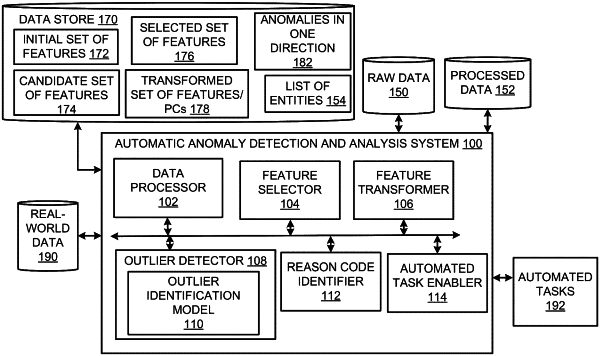| CPC G06F 18/2433 (2023.01) [G06F 17/18 (2013.01); G06F 18/2135 (2023.01); G06Q 10/0633 (2013.01)] | 19 Claims |

|
1. A computer-implemented, outlier detection method, comprising:
identifying a selected set of features from an initial set of features extracted from a data set, where the selected set of features is identified by reducing dependency between features of the initial set of features via an intermediate feature selection;
generating a training data set by transforming the selected set of features, where the transformation further reduces feature dependency between the selected set of features;
training an outlier identification model, comprising a Weighted Histogram-based Outlier Scoring (W-HBOS) model, on the training data set via unsupervised training;
selecting one of a higher value outlier subset and a lower value outlier subset included in an outlier set obtained by applying the outlier identification model to real-world data,
wherein the higher value outlier subset and the lower value outlier subset are identified based on comparison of outliers in the outlier set with a median value of the outlier set; and
executing one or more automated tasks using entities from the real-world data identified based on the subset of outliers.
|